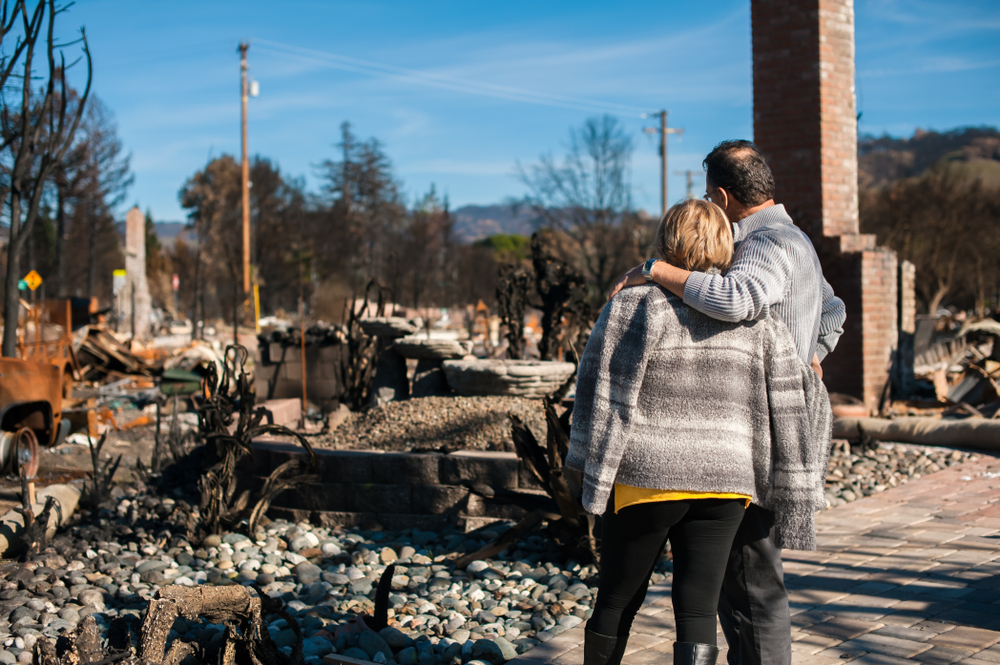Right now, California is facing a potential crisis that could shake the foundation of the state’s housing market. One of the state’s largest insurance providers, State Farm, is threatening to exit California due to the rising costs of insuring homes. If this happens, over one million properties could become uninsurable, leading to catastrophic consequences for homeowners and buyers alike.
So what does this mean for you?
To answer that question, we need to go back a bit and explore the causes of this insurance emergency. With that context, we can discuss who will be impacted and what homeowners can do to protect themselves. We’ll also take a look at the potential effects on property values and what the future holds for California’s housing market. With that, let’s dive in!
What Caused the Insurance Crisis?
The root of this crisis boils down to one thing: climate change. Over the past few years, California has experienced an unprecedented increase in extreme weather events—wildfires, floods, and droughts. These disasters have led to skyrocketing insurance claims, with weather-related catastrophic losses increasing by an astounding 700% since the 1980s. Wildfire-related costs alone have surged by over 2,000% from 2018 to 2025.
Insurance companies rely on historical data to assess risk, but climate change is introducing new threats that lack precedent. As a result, insurers are struggling to predict the true cost of covering properties in high-risk areas. 
State Farm, which insures over one million homes in California and holds 20% of the market share, has suffered substantial financial losses—$5.3 billion over the past nine years. The company has been paying out $1.26 for every $1 collected in premiums. In response, State Farm stopped issuing new policies in 2023 and began canceling existing policies in 2024, with 72,000 policies already terminated.
To stabilize its financial standing, State Farm requested a 22% rate hike. However, California’s insurance commissioner rejected this request under Proposition 103, which regulates insurance rate increases. State Farm argued that competitors like Allstate and Mercury General received approval for rate hikes of 30% and 12%, respectively, making the rejection seem unfair. Frustrated with the decision, State Farm has signaled that it may leave the California market altogether.
And State Farm isn’t alone—seven of the state’s top 12 insurers have either halted issuing new policies or severely restricted coverage. This combination of rising disaster-related costs, outdated insurance models, and regulatory challenges has led us to this critical moment.
Who Will Be Impacted?
Simply put—everyone. Homeowners, homebuyers, and real estate investors alike will feel the effects of this crisis.
Homeowners in high-risk areas will be hit the hardest. Many could face skyrocketing premiums or, worse, find their homes uninsurable. As major insurers withdraw, homeowners will be forced into California’s FAIR Plan, a state-run insurance pool that provides last-resort coverage. However, the FAIR Plan often comes with significantly higher costs and less coverage, making it a less-than-ideal solution.
Homebuyers will also struggle, as mortgage lenders require homeowners insurance to approve loans. If homeowners can’t secure coverage, their properties become un-mortgageable, reducing the pool of eligible buyers. This is especially concerning for buyers interested in homes in wildfire-prone areas, where property values could plummet by 20-30% due to declining demand. 
Real estate investors face new challenges as well. Some may see distressed property opportunities emerge in high-risk areas. However, rising insurance costs for rental properties—State Farm has proposed a 38% rate hike for rental insurance—mean investors must adjust their cash flow projections. Many may reconsider where and how they allocate their capital in the California market.
What Happens if Properties Aren’t Insurable?
If you can’t secure insurance, it doesn’t just mean increased costs—it means properties may become unsellable.
In disaster-prone regions, insurance is a requirement for home sales. Without coverage, mortgage lenders won’t approve loans, leading to a standstill in the real estate market. This could force you into a position where you either accept drastically reduced property values or struggle to sell altogether.
Additionally, the market could become polarized. Lower-risk areas, which remain insurable, may see an influx of demand, driving up home prices. Meanwhile, high-risk regions could face a severe drop in value, with fewer buyers willing to take the risk of ownership without stable insurance options.
As insurance availability shrinks, potential buyers may be deterred from entering the market altogether, leading to a slowdown in new home construction. Developers could shift focus toward lower-risk areas or out of state, exacerbating California’s already pressing housing shortage. This shift could limit housing inventory even further, making it even harder for buyers to find affordable homes.
At the same time, local governments may face revenue shortfalls due to declining property tax assessments in high-risk areas. With lower property values, municipalities will collect less in taxes, potentially leading to budget cuts in essential public services such as fire protection, emergency response, and infrastructure maintenance—further compounding the risks of living in these communities.
Overall, the insurance crisis threatens to create instability across the board—decreasing property values, limiting financing options, and reshaping California’s real estate landscape in ways that could take decades to recover from. 
What Can You Do to Protect Yourself?
While the situation is concerning, there are steps you can take to safeguard your investments:
- Shop Around for Insurance – With fewer options available, it’s more important than ever to compare policies. If your current insurer is raising premiums or considering non-renewals, another provider might still offer better terms—for now.
- Consider Retrofitting Your Home – Some insurers provide discounts for homes equipped with fire-resistant materials or properties with defensible spaces. Taking proactive steps to reduce wildfire risk could improve your insurability and lower premiums.
- Look Into the FAIR Plan – If your policy is dropped, the FAIR Plan may be your only option. Be sure to understand the limitations and explore additional coverage through private insurers to supplement gaps in protection.
- Consider Moving to a Lower-Risk Area – While a drastic step, relocating to a more stable region may be necessary for you if you’re facing untenable insurance costs or an inability to secure coverage altogether.
- Maintain Proper Home Maintenance – Keeping your home in good condition by addressing roof repairs, clearing gutters, and maintaining firebreaks can help minimize risks and potentially make your home more attractive to insurers.
- Advocate for Policy Reform – Homeowners can work with local government officials and advocacy groups to push for regulatory changes that balance consumer protection with insurers’ ability to operate sustainably in California.
By staying proactive and informed, you can better navigate this challenging landscape and protect yourself.
What Does the Future Hold?
California’s housing market is at a crossroads. As climate risks continue to escalate, we will likely see further instability in the insurance industry. The struggle between consumer protection regulations and insurer financial viability will only intensify, potentially requiring government intervention or new public-private partnerships to create sustainable solutions.
For homeowners, buyers, and investors alike, the future presents both risks and opportunities. While rising insurance costs may make homeownership less affordable, they could also open doors for investors willing to adapt. Regardless, understanding the broader implications of this crisis is essential for making informed decisions in the coming years.
If you’re considering buying or selling a home in California, now is the time to educate yourself on these challenges and prepare for the evolving market. The more informed you are, the better equipped you’ll be to navigate this shifting landscape and protect your investment.


